#Christian Gottlob Neefe
Text
Alla polacca
Christian Gottlob Neefe (5 febbraio 1748 - 1798): Sonata (n. 12) in la maggiore per pianoforte (1773). Susan Kagan.
Tempo giusto
Minuetto [2:59]
Alla polacca [6:59]
youtube
View On WordPress
0 notes
Photo

Beethoven’s father drank heavily, and, though he taught his son the piano initially, grew threatened by his knack for improvisation, and aggressive if he deviated from the sheet music.
Eventually Beethoven moved onto lessons with the composer Christian Gottlob Neefe, who published his first set of piano variations when he was 13.
In latter life, he poured a bucket of ice water over his head every time before he sat down to compose. And woke up at dawn every morning, even if it was in the winter.
After he went deaf (in his early thirties) he continued to compose because he could hear the music in his mind. And this is how he worked for the next two decades.
He died during a thunderstorm, after days of being bedbound and in extreme pain, without anaesthetic. His last ever words were, “Applaud my friends. The comedy is over.”
3 notes
·
View notes
Text
Beethoven's Ninth Symphony
Ludwig van Beethoven (Bonn, Germany – 1770) began his musical education at an early age under the tutelage of his father and later, Christian Gottlob Neefe. At the age of 17, Beethoven moved to Vienna to study with Joseph Haydn, where he quickly gained a reputation as a gifted pianist and composer.
Beethoven’s Ninth Symphony, premiered in 1824, is considered one of his most famous works, even…

View On WordPress
#Barenboim#Beethoven#classical music#music#music discussion#Music Education#Ode to Joy#Our Mind on Music#Symphony#Symphony No 9#West Eastern Divan Orchestra
1 note
·
View note
Photo

LUDWIG VAN BEETHOVEN El 16 de ziciembre de 1770 en Bonn, Sacro Imperio Romano germánico, nacía Ludwig Van Beethoven. Hijo de Johann Van Beethoven y María Magdalena Kaverick, el hecho que su padre se viera impresionado por que Wolfgang Amadeus Mozart diera conciertos a los 7 años, deseaba lograr lo mismo con su hijo Ludwig. El mismo quiso instruirlo, pero su pobre formación sumado al hecho que el talento musical de su hijo tardara en manifestarse, frustraba a ambos. No fue sino hasta que lo envió a estudiar con Christian Gottlob Neefe que las virtudes de Ludwig comenzaron a notarse. A los 11 años publicó su primera composición, al conocerse, ya se comenzó a hablar del segundo Mozart, el hecho que siempre se lo comparara con Wolfgang lo perturbaba pero a su vez lo motivaba. En 1787 su mecenas, el conde Ferdinand von Waldstein, le costea el viaje a Viena donde ni bien llegó tuvo un encuentro con Mozart, quien ya conocía su corta carrera y dijo a los comensales, “Recuerden su nombre, este joven hará hablar al mundo”. Pocos meses después de llegado a Viena, muere su madre y su padre cae preso por lo que tuvo que dar clases de piano para mantener a sus hermanos. Cuando su padre muere, Ludwig se vio liberado, toma clases de composición con Joseph Haydn y lírica con Antonio Salieri, para 1792 se había convertido en el músico y compositor mas reconocido. A partir de allí comenzó a dejar su sello en la música, desde el fin del período clásico Vienés hasta el principio del Romanticismo musical, su talento marcó los pasos de la música, su sordera y sus problemas económicos fueron obstáculos que sorteó con heroísmo. Su legado musical marcó a las generaciones siguientes de músicos y su obra es objeto de estudio y admiración. Si un gran músico no tenía grandes composiciones, no trascendía, su talento se diluía, pero Ludwig fue un compositor de excelencia que dejo plasmada una variada y emotiva cantidad de obras, su "Novena Sinfonía" es considerada "La obra perfecta". Finalmente debido a un envenenamiento por plomo, (durante años usaba vasos de ese material) su vida se apagó a los 56 años, el 26 de Marzo de 1827, sus restos descansan en el cementerio Zentralfriedhof de Viena. https://www.instagram.com/p/CmPd7-zuTQn/?igshid=NGJjMDIxMWI=
0 notes
Video
youtube
Christian Gottlob Neefe: Sonata No. 9 in C minor
00:00 Moderato 02:52 Minuetto-Trio-Minuetto 06:05 Polacca
Oliver Drechsel, clavichord nach Wilhelm Heinrich Baethmann, Hannover 1799 (copy of J.C. Neupert, Bamberg 1999).
1 note
·
View note
Photo

02 BEETHOVEN’S TIMELINE
1770 Ludwig van Beethoven is born in Bonn
1776 Starts studying with his father, Johann van Beethoven, 1740?-92)
1778 Has his first public performance
1780 Begins studying the violin and viola under Franz Rovantini
1781 Studies composition and piano under Christian Gottlob Neefe
1782 Under Neefe’s supervision Beethoven publishes his first work “9 Variations in C Minor”
1787 Goes to Vienna and meets Mozart
1789 Attends the University of Bonn, plays in the court orchestra as a violist 1790 Meets Joseph Haydn
1794 Studies under Georg Albrechtsberger
1795 Publishes his first opus: Piano Trios, Op. 1
1799 Serves as piano teacher for Therese and Josephine Brunsvik
1800 Performs his first public concert in Vienna, Symphony No.1 and Piano Concerto No.1
1800 Takes Carl Czerny as his pupil
1801 Studies opera composition with Antonio Salieri
1802 Moves to Heiligenstadt, writes the Heiligenstadt Testament
1802 Publication of Violin Sonata No.5, Spring Sonata
1802 Publication Piano Sonata No.14, Moonlight Sonata
1803 Meets his greatest patron, Archduke Rudolph
1803 Composes Symphony No.3, intends to dedicate it to Napoleon
1804 Disillusioned with Napoleon, renames Symphony No.3 to Eroica
1805 France invades Vienna and the court escapes; Beethoven loses his job 1805 Composes Piano Sonata No.23, Appassionata
1806 Commissioned by Count Franz von Oppersdorff to write Symphony No.4 1806 Composes Violin Concerto in D major
1807 Composes Triple Concerto in C major
1808 Premiere of Symphony No.5 and No.6 at Theater an der Wien, Vienna. Beethoven plays his Piano Concerto No.4
1809 Receives an annuity of 4,000 florins from three noble patrons, an equivalent of $3,800,000 NTD today
1809 Composes Piano Concerto No.5, Emperor Concerto
1810 Writes "Für Elise" and proposes to Therese Malfatti but gets rejected
1811 Composes the Wellington’s Victory to commemorate the Battle of Vitoria, gains wide popularity
1812 Meets Johann Wolfgang Goethe
1812 Writes the “Immortal Beloved", Unsterbliche Geliebtet
1812 Conducts the charity concert commemorating the wounded soldiers of the Battle of Vitoria, performing his Symphony No.7 and Wellington's Victory 1814 Premiere of Symphony No.8
1815 The passing of Beethoven’s brother Caspar Carl van Beethoven; becomes one of the guardians of Carl’s son
1816 Starts using “conversation books”
1818 Starts composing Missa Solemnis
1820 Wins custody battle over his nephew Karl and determines to make Karl his successor
1822 Composes his last Piano Sonata, Op.111
1824 Premiere of Missa Solemnis and Symphony No. 9 in D minor, Choral Symphony
1825 Becomes an honorary member of Wiener Musikverein
1826 Plagued by illness. His nephew’s suicide attempt torments him greatly 1827 Beethoven dies in Vienna, at the age of 56
68 notes
·
View notes
Photo

Christian Gottlob Neefe. Engraving after Johann Georg Rosenberg, c. 1798
1 note
·
View note
Photo

#Repost @historylatam (@get_repost) ・・・ #HoyEnLaHistoria Hace 211 años, el genial músico alemán Ludwig van Beethoven componía Para Elisa, una de sus piezas más conocidas. ⠀ El 27 de abril de 1810, el célebre compositor Ludwig van Beethoven compuso Para Elisa, también conocida como Para Teresa, una de sus piezas más famosas. Fue publicada en 1867, 40 años después de la muerte de su autor, por Ludwig Nohl. ⠀ Beethoven nació en Bonn, Alemania, el 16 de diciembre de 1770. Comenzó sus estudios musicales a muy temprana edad, aprendió a tocar el piano, el órgano y el clarinete. A los 7 años dio su primer concierto y en 1782, bajo las enseñanzas de Christian Gottlob Neefe, publicó su primera composición. ⠀ Durante su adolescencia viajó a Viena para continuar su formación, pero debió regresar a su ciudad natal poco después a causa de la enfermedad de su madre. En 1792, luego de la muerte de sus padres, viajó a Viena nuevamente. Allí, 3 años más tarde, hizo su debut como músico profesional, interpretando piezas de su autoría. ⠀ Su reputación creció rápidamente, a la vez que aumentaba su sordera. Durante su prolífica carrera compuso, entre muchas otras obras, más de 30 sonatas para piano, cuartetos de cuerda, cinco conciertos para piano, dos misas, y sus nueve sinfonías. Falleció el 26 de marzo de 1827, a los 56 años de edad. ⠀ #Beethoven #Musica #Arte #Artista #ParaElisa #Composicion #Piano #Alemania #Cultura #Historia #Mundo https://www.instagram.com/p/COLPtoUFh1BWwEKpOaQAW2Q4qfPwTjTnGGvjfw0/?igshid=1o0ymdcj01sn3
#repost#hoyenlahistoria#beethoven#musica#arte#artista#paraelisa#composicion#piano#alemania#cultura#historia#mundo
1 note
·
View note
Photo
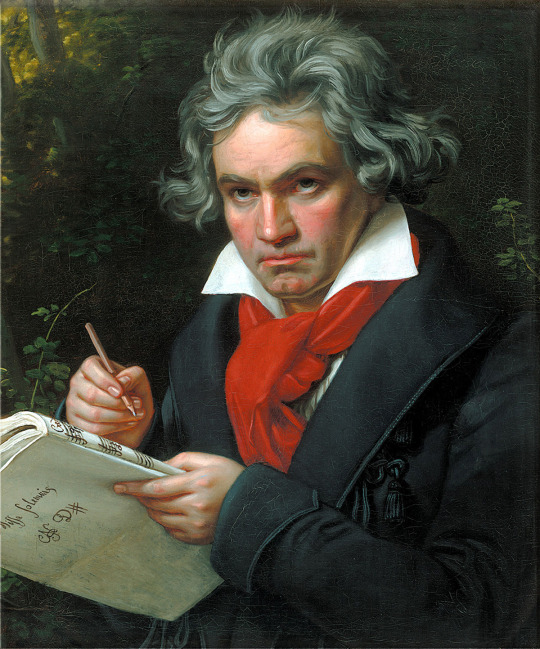
Arrivals & Departures
16 December 1770 – 26 March 1827
Celebrate Ludwig van Beethoven Day!
Ludwig van Beethoven (/ˈlʊdvɪɡ væn ˈbeɪt(h)oʊvən/ (listen); German: [ˈluːtvɪç fan ˈbeːthoːfn̩] (listen); baptised 17 December 1770 – 26 March 1827) was a German composer and pianist. A crucial figure in the transition between the classical and romantic eras in classical music, he remains one of the most recognized and influential musicians of this period, and is considered to be one of the greatest composers of all time.
Beethoven was born in Bonn, the capital of the Electorate of Cologne, and part of the Holy Roman Empire. He displayed his musical talents at an early age and was vigorously taught by his father Johann van Beethoven, and was later taught by composer and conductor Christian Gottlob Neefe. At age 21, he moved to Vienna and studied composition with Joseph Haydn. Beethoven then gained a reputation as a virtuoso pianist, and was soon courted by Karl Alois, Prince Lichnowsky for compositions, which resulted in Opus 1 in 1795.
The piece was a great critical and commercial success, and was followed by Symphony No. 1 in 1800. This composition was distinguished for its frequent use of sforzandi, as well as sudden shifts in tonal centers that were uncommon for traditional symphonic form, and the prominent, more independent use of wind instruments. In 1801, he also gained notoriety for his six String Quartets and for the ballet The Creatures of Prometheus. During this period, his hearing began to deteriorate, but he continued to conduct, premiering his third and fifth symphonies in 1804 and 1808, respectively. His condition worsened to almost complete deafness by 1811, and he then gave up performing and appearing in public.
During this period of self exile, Beethoven composed many of his most admired works; his seventh symphony premiered in 1813, with its second movement, Allegretto, achieving widespread critical acclaim. He composed the piece Missa Solemnis for a number of years until it premiered 1824, which preceded his ninth symphony, with the latter gaining fame for being among the first examples of a choral symphony, In 1826, his fourteenth String Quartet was noted for having seven linked movements played without a break, and is considered the final major piece performed before his death a year later.
His career is conventionally divided into early, middle, and late periods; the "early" period is typically seen to last until 1802, the "middle" period from 1802 to 1812, and the "late" period from 1812 to his death in 1827. During his life, he composed nine symphonies; five piano concertos; one violin concerto; thirty-two piano sonatas; sixteen string quartets; two masses; and the opera Fidelio. Other works, like Für Elise, were discovered after his death, and are also considered historical musical achievements. Beethoven's legacy is characterized for his innovative compositions, namely through the combinations of vocals and instruments, and also for widening the scope of sonata, symphony, concerto, and quartet, while he is also noted for his troublesome relationship with his contemporaries.
4 notes
·
View notes
Text
The Classical Era (1750 - 1825)
The Classical Era brought with it an addition of new instruments. The Double Bass, the Clarinet and the Piano. We also have new musical idioms such as the Solo Concerto often performed with piano, the Solo Sonata which was also solo piano or another instrument accompanied by the piano. As you can tell once the piano was invented it was used quite extensively. And rightfully so, the piano’s wide 7 octave range across 88 keys made it extremely versatile.
We’re also acquainted with Chamber music, a string quartet. Opera, Masses and Oratorios are still relevant. But one major game changer was the Symphony format.
Joseph Hadyn (1743 - 1809)

Franz Joseph Haydn was an Austrian composer of the Classical period. He was instrumental in the development of chamber music such as the piano trio. His contributions to musical form have earned him the epithets "Father of the Symphony" and "Father of the String Quartet".
Haydn spent much of his career as a court musician for the wealthy Esterházy family at their remote estate. Until the later part of his life, this isolated him from other composers and trends in music so that he was, as he put it, "forced to become original". Yet his music circulated widely, and for much of his career he was the most celebrated composer in Europe.
He was a friend and mentor of Mozart, a tutor of Beethoven, and the older brother of composer Michael Haydn.
Source: Wikipedia
youtube
Symphony No. 88 4th Movement Finale: Allegro Con Spirito
Wolfgang Amadeus Mozart (1756 - 1791)
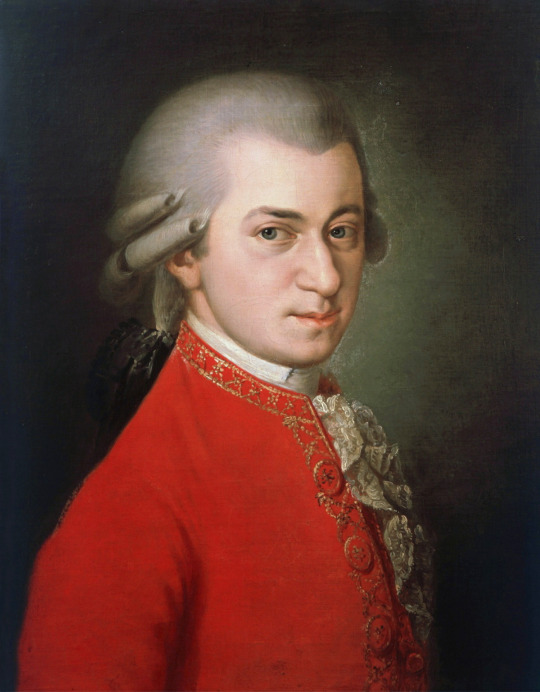
We all know of him and his profound use of musical composition in film and media in modern times.
Mozart was a prolific and influential composer of the classical era.Born in Salzburg, Mozart showed prodigious ability from his earliest childhood. Already competent on keyboard and violin, he composed from the age of five and performed before European royalty. At 17, Mozart was engaged as a musician at the Salzburg court but grew restless and travelled in search of a better position. While visiting Vienna in 1781, he was dismissed from his Salzburg position. He chose to stay in the capital, where he achieved fame but little financial security. During his final years in Vienna, he composed many of his best-known symphonies, concertos, and operas, and portions of the Requiem, which was largely unfinished at the time of his early death at the age of 35. The circumstances of his death have been much mythologized.He composed more than 600 works, many of which are acknowledged as pinnacles of symphonic, concertante, chamber, operatic, and choral music. He is among the most enduringly popular of classical composers, and his influence is profound on subsequent Western art music. Ludwig van Beethoven composed his early works in the shadow of Mozart, and Joseph Haydn wrote: "posterity will not see such a talent again in 100 years".
Source: Wikipedia
youtube
Ludwig Van Beethoven (1770 - 1791)

Beethoven was a German composer and pianist. A crucial figure in the transition between the classical and romantic eras in classical music, he remains one of the most recognized and influential musicians of this period, and is considered to be one of the greatest composers of all time.Beethoven was born in Bonn, the capital of the Electorate of Cologne, and part of the Holy Roman Empire. He displayed his musical talents at an early age and was vigorously taught by his father Johann van Beethoven, and was later taught by composer and conductor Christian Gottlob Neefe. At age 21, he moved to Vienna and studied composition with Joseph Haydn. Beethoven then gained a reputation as a virtuoso pianist, and was soon courted by Prince Lichnowsky for compositions, which resulted in Opus 1 in 1795.
Source: Wikipedia
youtube
Antonia Vivaldi (1678 - 1741)
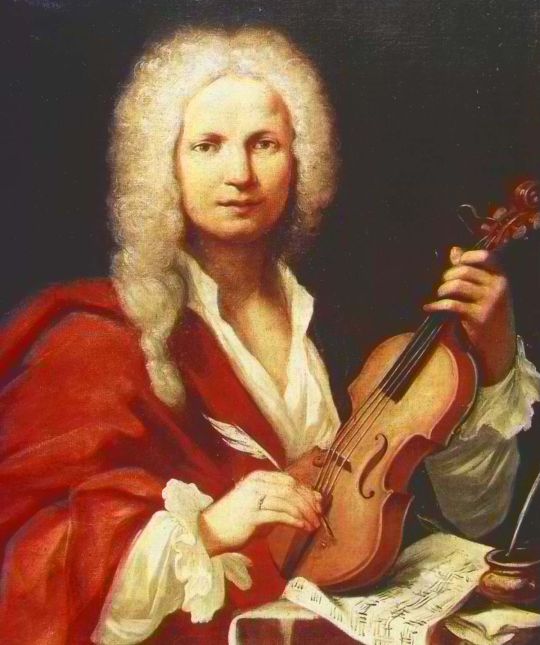
Vivaldi, the Baroque musical composer, virtuoso violinist, teacher, and priest. Born in Venice, the capital of the Venetian Republic, he is regarded as one of the greatest Baroque composers, and his influence during his lifetime was widespread across Europe. He composed many instrumental concertos, for the violin and a variety of other instruments, as well as sacred choral works and more than forty operas. His best-known work is a series of violin concertos known as the Four Seasons.Many of his compositions were written for the all-female music ensemble of the Ospedale della Pietà, a home for abandoned children. Vivaldi had worked there as a Catholic priest for 1 1/2 years and was employed there from 1703 to 1715 and from 1723 to 1740. Vivaldi also had some success with expensive stagings of his operas in Venice, Mantua and Vienna. After meeting the Emperor Charles VI, Vivaldi moved to Vienna, hoping for royal support. However, the Emperor died soon after Vivaldi's arrival, and Vivaldi himself died, in poverty, less than a year later.
Source: Wikipedia
youtube
The Classical Era sees the French Revolution
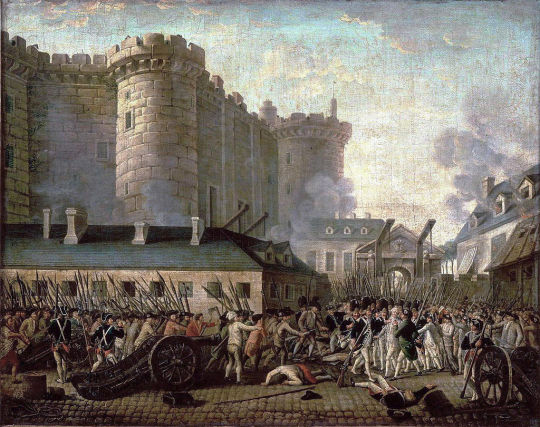
Formation of colonies

The American Revolution

Aristocratic Society

All forms of medium come around full circle back to Greek and Roman philosophy.
The Steam Engine is invented.

Benjamin Franklin discovers electricity

Oxygen is discovered

Encyclopedia Britannica is invented
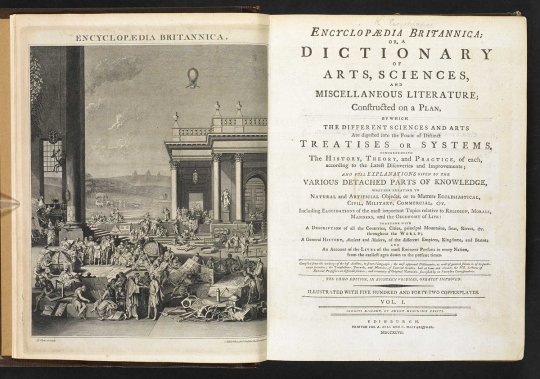
Vienna becomes the cultural center for all mediums of art

The Sonata Allegro form develops into the most common form of orchestral composition. Containing 3 major sections: The Exposition (1st theme, bridge transition, 2nd theme in a new key and the closing section), The Development (variations on themes in different keys), and the Recapitulation (the return to the 1st theme, the bridge in the same key, 2nd theme same as the 1st theme, the closing section and the Coda ending).
Symphonies have 4 parts called movements. First Movement is the Andante/Adagio or theme and variation. Second Movement is the Allegro, Sonata - Allegro form. Third Movement is the 3/4 minuet dance. The Fourth Movement is the Allegro/Presto, Sonata Allegro form and has no exposition repeat.
Beethoven used 4 notes in his first symphony. He also incorporated tempo variations to add suspense and emotion. He created art for the sake of creating art with much longer Codas. This allows the music to be more expressive. He sometimes would write what was call Sherzo, a comedic evil dance. It was all in dark humor though.
1 note
·
View note
Text
Variazioni sulla Marcia dei sacerdoti
Wolfgang Amadeus Mozart (1756 - 1791): «Priestermarsch» (Marcia dei sacerdoti), dal II atto, scena 1a, del Singspiel Die Zauberflöte (Il flauto magico) K 620 (1791). Academy of St Martin in the Fields, dir. sir Neville Marriner.
Christian Gottlob Neefe (5 febbraio 1748 - 1798): Veränderungen über den Priestermarsch aus Mozarts Zauberflöte (Variazioni sulla Marcia dei sacerdoti). Gabriel Isenberg…
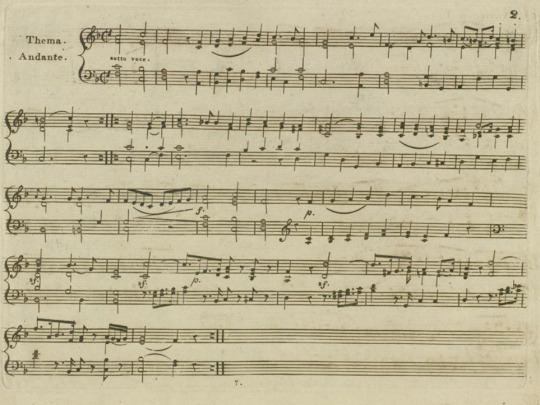
View On WordPress
#Academy of St Martin in the Fields#Christian Gottlob Neefe#Gabriel Isenberg#Neville Marriner#Wolfgang Amadeus Mozart
0 notes
Text
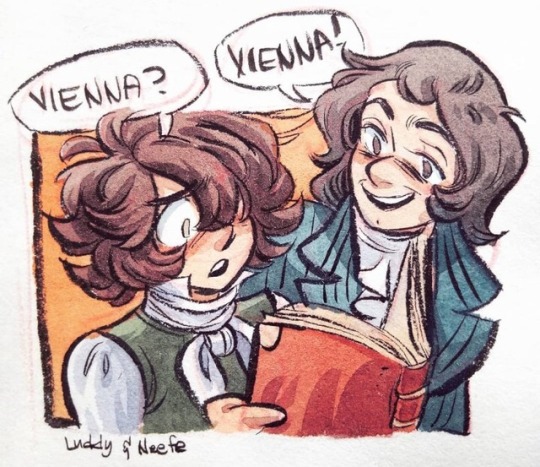
“Vienna - the city of musicians” 😏
Young Ludwig had to be encouraged by his teacher Christian Gottlob Neefe to make the long voyage to Vienna from Bonn.
Neefe used the historical version of “Go Fund Me” to draw financial support from the community in order to send young Beethoven on his way.
Though the trip itself was short lived - the long term gains were well worth the effort
#ludwig#beethoven#ludwig van beethoven#young beethoven#neefe#music history#true facts#first teachers#influential people
100 notes
·
View notes
Photo
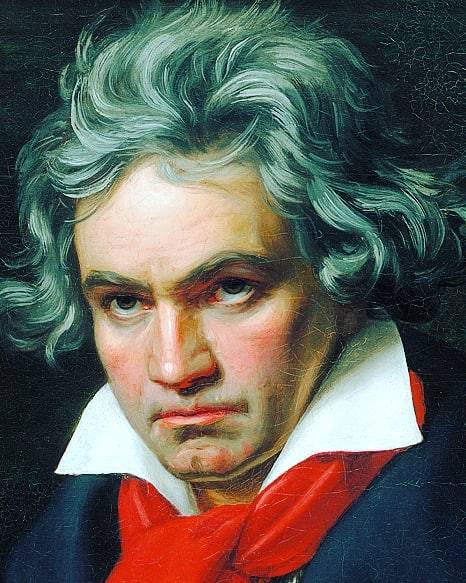
#BEETHOVEN; BREVE HISTORIA Ludwig van Beethoven compositor y pianista alemán Ludwig van Beethoven (Bonn, Arzobispado de Colonia; 16 de diciembre de 1770-Viena, 26 de marzo de 1827) Fue un #compositor, #director de #orquesta, #pianista y #profesor de #piano alemán. Su legado musical abarca, cronológicamente, desde el Clasicismo hasta los inicios del Romanticismo. Es considerado uno de los compositores más importantes de la historia de la música y su legado ha influido de forma decisiva en la evolución posterior de este arte. Ludwig van Beethoven Imagen: Retrato realizado por Joseph Karl Stieler en 1820. ******** Información personal Nacimiento: 16 de diciembre de 1770 Bonn (Arzobispado de Colonia, Sacro Imperio Romano Germánico) [actual Alemania] Fallecimiento: 26 de marzo de 1827 Viena (Imperio austríaco) [actual Austria] Causa de la muerte: Cirrosis hepática Sepultura: Zentralfriedhof Nacionalidad: Alemana Lengua materna: Alemán Religión: Catolicismo ******** Familia: Padres Johann van Beethoven Maria Magdalena van Beethoven ******** Hijos: 0 (ninguno) ******** Educación: Alumno de: Christian Gottlob Neefe Muzio Clementi Joseph Haydn (1792-1794) Antonio Salieri Johann Baptist Schenk Johann Georg Albrechtsberger ******** Información profesional: Ocupación: Compositor, pianista, director de orquesta, profesor de música, #organista, #virtuoso, #improvisador, #violinista y #músico Años activo: 1782-1827 Estudiantes: Carl Czerny, Ferdinand Ries y Rodolfo de Austria ******** #Musica #BellasArtes (en Santo Domingo, Dominican Republic) https://www.instagram.com/p/CI7DxPxDtt7/?igshid=phe7gb6mtc3j
#beethoven#compositor#director#orquesta#pianista#profesor#piano#organista#virtuoso#improvisador#violinista#músico#musica#bellasartes
0 notes
Video
youtube
Christian Gottlob Neefe (1748-1798): Veränderungen über den Priestermarsch aus Mozarts Zauberflöte 9 Variationen und Coda
Gabriel Isenberg an der Orgel in St. Johannes Bapt. Welschen Ennest (Hans Peter Mebold, Siegen 2002)
1 note
·
View note
Text
Louis Van Beethoven | Teaser
Louis Van Beethoven | Teaser
The year is 1826. Ludwig van Beethoven (Tobias Moretti) faces the final stanza of his storied career. Deaf and defiant, he recalls memories of his youth, when as an eight-year-old prodigy he comes under the tutelage of the Bonn court organist, Christian Gottlob Neefe. Years later after an encounter with Mozart, the young “Louis” begins to study under Joseph Haydn in Vienna, but family tragedies…
youtube
View On WordPress
0 notes
Text
Haydn und seine Zeitgenossen
Joseph Haydn verbrachte den Großteil seines Lebens in Esterházy, um für seine Fürsten Musik zu komponieren. Obwohl er der Erfinder und Entwickler der Gattung Streichquartett war, gab es noch weitere bekannte Komponisten, mit denen er sich die Zeit der Klassik teilte. Im folgenden Blog finden sich Informationen zu Wolfgang Amadeus Mozarts und Ludwig van Beethovens Leben, da beide eine unmittelbare Beziehung zu Haydn hatten. Mozart und Haydn waren gute Bekannte und schrieben sich oft Briefe, während Beethoven nur kurze Zeit Unterricht beim alten Haydn nahm.
Wolfgang Amadeus Mozart
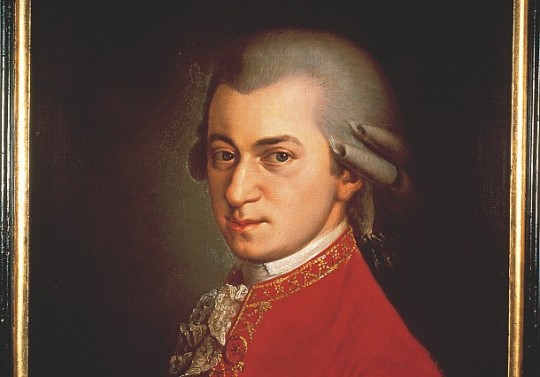
Foto: Wolfgang Amadeus Mozart. Credit: Österreich Werbung - Gesellschaft der Musikfreunde
Nachdem Mozarts Vater, der bisher selbst Musiker war, das Talent seines jungen Sohns erkannt hatte, schrieb er sich selbst vom Praktizieren der Musik los und förderte seine Kinder. Mit seiner Schwester, Nannerl, musizierte Mozart für Königen und anderen Adeligen. Mozart erkannte ziemlich früh, dass er auch für Kompositionen begabt war und sagte sich schnell als Bediensteter des Salzburger Erzbischofs los. Im Jahr 1781 verließ er dann – obwohl er keine feste Anstellung hatte – Salzburg und ließ sich als freischaffender Musiker in Wien nieder, wo er auch ein Jahr später seine große Liebe Constanze Weber heiratete. Als er mit 36 Jahren dann in Wien verarmt starb, hat Mozart insgesamt 655 Werke verfasst – darunter befinden sich 59 Sinfonien und 136 Stücker, die man der Kammermusik zuordnen kann. Obwohl er in Wien viel Ansehen mit seiner Musik erreicht hatte, verbrachte er seine letzten Jahre in hoher Armut, die seinem Lebensstil zu verdanken war. 1791 wurde er in Wien in einem Massengrab beigesetzt.
Ludwig van Beethoven

Foto: Ludwig van Beethoven. Credit: LVR-Zentrum für Medien und Bildung
Beethoven wird traditionell noch als Komponist der Klassik gesehen, obwohl er für andere Musiker den Weg in die Romantik gelegt hatte. In Bonn erhielt er, sobald sein Talent für Musik bekannt geworden war, Unterricht beim Hoforganisten Christian Gottlob Neefe, den er auch wenige Zeit später vertreten hatte. Mit 17 Jahren reiste er nach Wien, wo er Unterricht bei Joseph Haydn nahm, was zu seiner Beziehung mit Aristokraten beitrug. Durch die Virtuosität und sein kompositorisches Talent lernte er viele Mäzene kennen, denen er im Laufe seines Lebens einige Werke widmete. Als er 1802 das Schicksal seiner Taubheit akzeptierte, beschrieb er im so genannten Heiligenstädter Testament sein Leiden. Anders als erwartet, erfolge darauf jedoch noch eine sehr produktive Phase, in der viele seiner berühmtesten Kompositionen entstanden sind. Obwohl er in seinen letzten Jahren an Depression litt, schuf er einige wichtige Werke in dieser Zeit, wie das Ende der neunten Sinfonie mit dem Chorfinale der „Ode an die Freude“. 1827 erkrankte er dann jedoch an einer Leberzirrhose und einer Lungenentzündung. Er wurde in großem Rahmen von mehr als zehntausend Menschen bestattet.
Joseph Haydn | Esterházy-Torte
Um die Tortenböden so hinzubekommen wie damals, schlägt man das Eiklar von acht Eiern zu steifem Schnee und gibt löffelweise 200 Gramm Staubzucker hinzu. Während man den Schnee gut ausschlägt, gibt man eine Messerspitze Zimt und die Schale einer Zitrone dazu. Dann vermischt man 150 Gramm geriebene Mandeln und 40 Gramm Mehl, das anschließend in den Schnell eingerührt wird. Dann leert man die Masse in gleicher Form auf ein Backblech, backt es in mittelheißem Rohr hellbrauen und löst die Böden sofort vom Backpapier ab.
Während die Tortenböden auskühlen widmet man sich jetzt der Creme. Während man die eine Hälfte von ¼ Liter Milch aufkocht, rührt man die andere Hälfte mit 150 Gramm Zucker, 30 Gramm Puddingpulver, Vanillepulver und zwei Eigelb zusammen. Diese Mischung kommt dann in die kochende Milch. Anschließend werden 60 Gramm Kokosfett geschmolzen und mit 250 Gramm Butter schaumig gerührt. Die Puddingcreme, die man mit Kirschwasser abschmecken soll, wird dann gleichmäßig auf die Tortenböden verteilt. Fünf Böden werden übereinandergestapelt, der schönste Boden wird auf die letzte Cremeschicht verkehrt auf die Torte gesetzt. Anschließend wird der letzte Boden dünn mit Marillenmarmelade bestrichen und kühl gestellt.
Für die Glasur wird ein Becher weißer Fondant im Wasserbad erhitzt. Zwei Esslöffel Fondant mit Kakao einfärben und in ein Papierstanitzel gefüllt. Die weiße Glasur wird auf die Torte aufgetragen, während mit dem Stanitzel Streifen bis zum Rand gemalt werden. Mit einem Zahnstocher werden die Glasuren miteinander vermischt, sodass Querstreifen entstehen. An die Seite wird Creme gestrichen, die mit gehobelten Mandeln bestreut wird. Zum Schluss wird die Torte mit kandierten Kirschen garniert.
#lecker#torte#joseph haydn#mozart#beethoven#food#recipe#18th century#19th century#freundschaft#lehrer#schüler#classical music#musik#love for music
0 notes